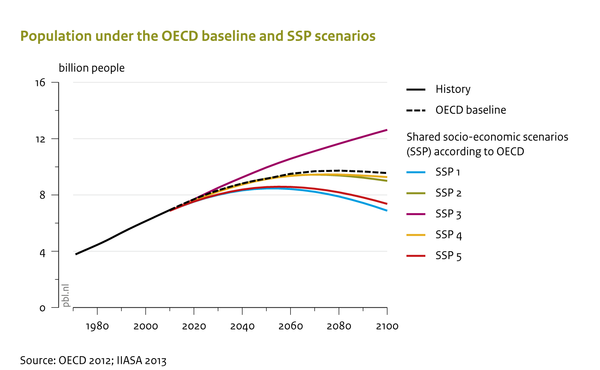Baseline figure Drivers: Difference between revisions
Jump to navigation
Jump to search

m (Text replace - "Scenario drivers" to "Drivers") |
(CSV import) |
||
| Line 1: | Line 1: | ||
{{FigureTemplate | {{FigureTemplate | ||
|Figure=142g img13.png | |Figure=142g img13.png | ||
|AltText=Population | |AltText=Population under the OECD baseline and SSP scenarios | ||
|Caption= | |Caption=Total global population is projected to peak and then decline in the coming century, except under the high-end assumptions (SSP3). By 2100, the population may range between the current level and twice as many than in 2000 in the SSPs. The OECD Outlook assumes an intermediate population growth trajectory, close to the medium population SSP scenarios. | ||
|FigureType=Baseline figure | |FigureType=Baseline figure | ||
|OptimalSize=600 | |OptimalSize=600 | ||
|Component=Drivers; | |Component=Drivers; | ||
}} | }} | ||
Revision as of 14:43, 23 May 2014

Caption: Total global population is projected to peak and then decline in the coming century, except under the high-end assumptions (SSP3). By 2100, the population may range between the current level and twice as many than in 2000 in the SSPs. The OECD Outlook assumes an intermediate population growth trajectory, close to the medium population SSP scenarios.
Figure is used on page(s): Drivers